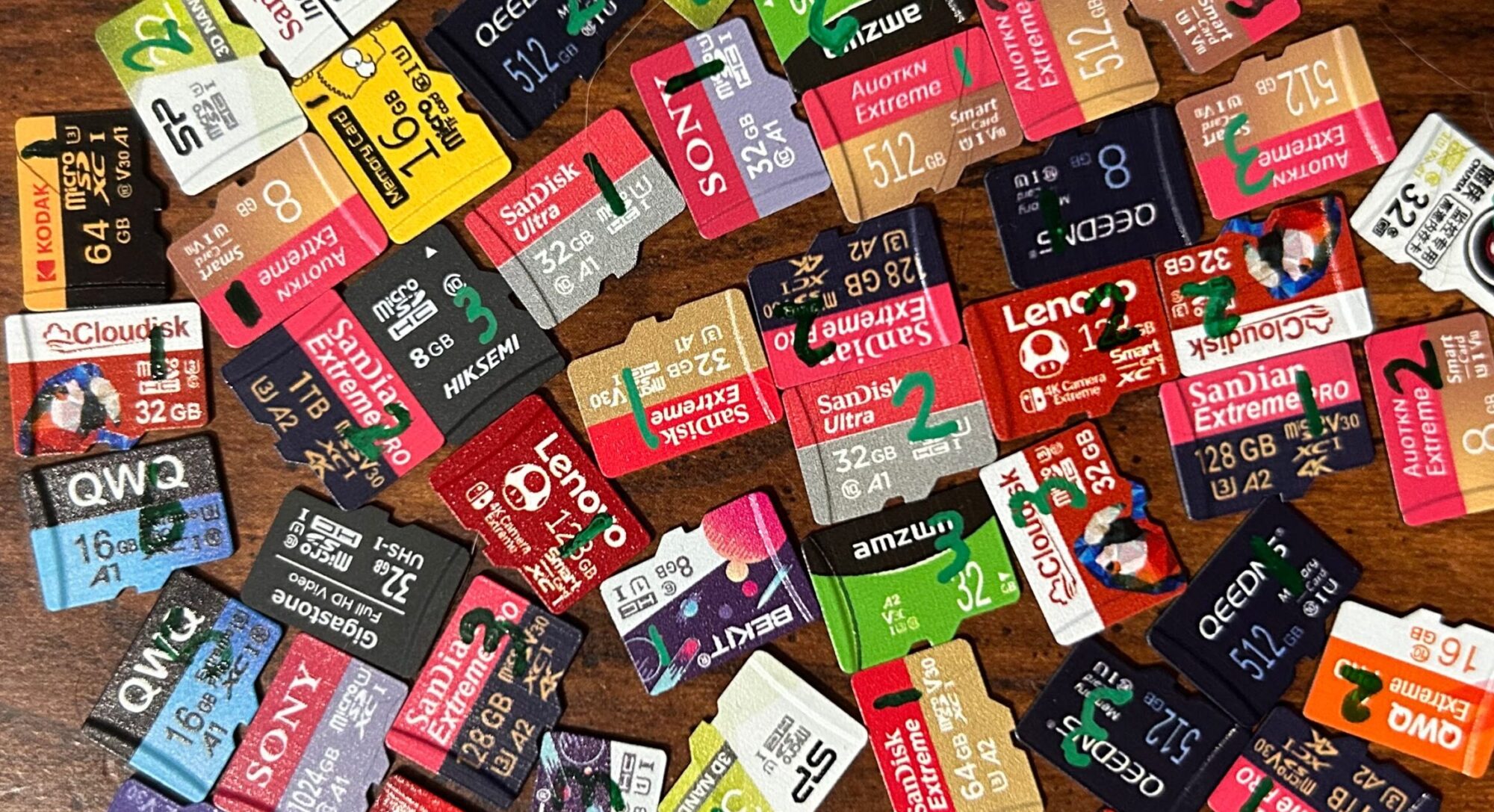Silicon Power is a name that I wasn’t very familiar with going into this project. However, they met all the criteria that I set out for determining what’s considered a name brand card, so I’ve decided to include their results in the name brand bucket.
3D NAND is a newer flash memory technology where transistors are built up in layers, allowing for greater memory density. In fact, Branch Education did an excellent video on SSDs where they went into how 3D NAND technology works and how it’s produced. Since it’s a newer technology, I wanted to see how it compares to traditional (2D) NAND. This was the first one I found that advertised itself as 3D NAND and was within my budget.
You might notice the difference in price, as well as the fact that two of them have CID data indicating that they were manufactured in 2009. What I purchased was a single card and a two-pack, as the two-pack was only a few dollars more than the single card. Of course, what Amazon sent me was just two single cards (each in its own packaging) together in an envelope. I believe the two that have their manufacture date set to 2009 were from this pack, but I didn’t keep track of which ones came from the two-pack, so I can’t be 100% sure. Why do they have their manufacture date set to 2009? No clue. But I’m pretty sure the chances that they were actually manufactured in 2009 are next to nil.
Performance on these cards was a little disappointing. Sequential read speeds were above average, but all other metrics were below average. Is this a factor of the fact that this is a 3D NAND card? I have no idea, because I have no basis for comparison here — most manufacturers don’t advertise what technology they used to manufacture their cards, so I don’t know what’s 3D NAND and what’s 2D NAND (apart from these).
These cards bear the U1 performance mark. The Class 10 mark appears on the product package, but does not appear on the card itself. Performance across all three samples was good enough to qualify for both of these marks.
The results of the endurance tests for these cards was also disappointing. All three of them failed in the same way: they simply stopped responding to commands, even though they had been doing quite well in the endurance tests up until that point. None of them made it to the 2,000 read/write cycle mark; sample #3 didn’t even make it to the 1,000 read/write cycle mark before failing.
Overall? I dunno — the poor performance and poor endurance doesn’t exactly inspire confidence. I don’t think this is a result of the fact that these cards are 3D NAND, because I’ve been getting similar results from the SP Superior 128GB and the SP Superior Pro 128GB. It seems that Silicon Power cards in general just don’t endure very well.
I think my advice here is don’t buy these — you’re better off spending your money on something like a Kingston Canvas Go! Plus (SDCG3) 64GB or a PNY Elite PRO Prime 64GB instead.
November 9, 2025

